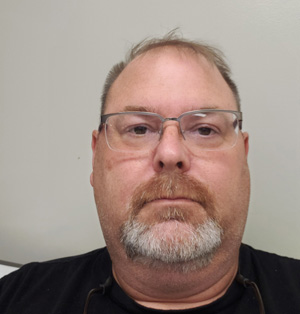by Matt Batcheldor
Vanderbilt University Medical Center has completed its 10,000th organ transplant, a monumental achievement representing nearly 60 years of life-saving work.
VUMC passed the 10,000 mark overall in July, in the same year that the Vanderbilt Transplant Center celebrated its 30th anniversary. Since VUMC’s first kidney transplant in 1962, Vanderbilt surgeons have transplanted 5,664 kidneys, 2,384 livers, 1,380 hearts and 572 lungs.

Vanderbilt’s 10,000th transplant patient was Brian Bradley, 48, of the Birmingham, Alabama, area. Bradley received a kidney transplant on July 31, two-and-a-half years after first experiencing kidney failure.
Bradley remembers receiving the call that he got the lifesaving kidney. He later found out it was the 10,000th overall.
“That was the best feeling in the world,” he said. “I was very pleased about getting a call and grateful that somebody had made the donation. Whoever did the donation is a lifesaver to me.”
Bradley’s transplant surgeon was David Shaffer, MD, professor of Surgery.
“Ten thousand transplants are a testament to the extraordinary organ transplant teams assembled at Vanderbilt,” Shaffer said. “I am proud to be part of one of the oldest and now one of the largest kidney transplant programs in the country, enabling us to positively impact the lives of so many people such as Mr. Bradley.”
Rachel Forbes, MD, MBA, associate professor of Surgery, and chief of the Division of Kidney and Pancreas Transplantation, added, “It could not be more fitting that this incredible 10,000th transplant was performed by Dr. David Shaffer, who himself has done more than 1,750 kidney transplants at VUMC — a legacy within a legacy.”
Over the years, Vanderbilt has had a succession of firsts, including being the first kidney transplant program in Tennessee to perform a minimally invasive laparoscopic donor nephrectomy in 2001.
VUMC performed its first heart transplant in 1985, the Southeast’s first combined heart/lung transplant in 1987, first liver in 1990 and first single lung transplant in 1990. Vanderbilt completed its first successful double lung transplant in 1994, Tennessee’s first paired kidney exchange in 2004 and first combined heart-kidney in 2008. Recent accomplishments include the first pediatric heart-kidney transplant in 2016 and first heart-liver in 2017.
Vanderbilt now serves 9,000 transplant patients, and it takes a highly specialized, multidisciplinary team of about 150 people to work on a single transplant.
VUMC is now the leading heart transplant program by volume in the United States. In 2019, Vanderbilt transplanted more hearts than any other center in the United States except for Cedars-Sinai Medical Center in Los Angeles, which tied Vanderbilt. It is now the seventh largest transplant center in the country, out of 251 such centers.
The Vanderbilt Transplant Center is the South’s premier transplant center, providing more opportunity for patients to participate in clinical trials that help advance the science of organ transplantation, as well as access to other specialists.
Vanderbilt has access to organs that other centers don’t, meaning more chances at life. As part of a clinical trial, the Medical Center is using the TransMedics system, also known as “Heart in a Box,” which preserves organs in transit to VUMC that may otherwise deteriorate using conventional methods.
This year, VUMC joined just a handful of centers that successfully transplanted hearts considered DCD, or Donation after Circulatory Death, which most centers are unable to use. The organs are recovered after a patient has died, rather than the conventional method of obtaining them from a living but brain-dead patient. The deceased person’s organs are preserved using a new warm perfusion system.
In recent years, VUMC was one of the first centers in the country to accept Hepatitis-C-positive organs, which can be cured of the disease with a short regimen of medications, which expanded the donor pool. And VUMC now has the ability for live liver donation in addition to its established live-kidney and paired kidney transplantation program, further expanding options for patients.
Bradley, the 10,000th transplant patient, said his experience was wonderful.
“It’s just a night and day difference on how I feel,” he said. “Everybody says I look different, skin looks different and everything. It’s a change, but it’s a good change and I am grateful for the team that made it all possible.”
He was complimentary of the Vanderbilt team.
“As soon as I stepped in the door, all the nurses and doctors have just been awesome,” he said. “I have no complaints whatsoever. Everybody has been great.”
Seth Karp, MD, H. William Scott Jr. Professor, chair of the Section of Surgical Sciences and director of the Vanderbilt Transplant Center, said the milestone reflected a legacy including founding Transplant Center Director and former U.S. Senator Bill Frist, MD; his successor, C. Wright Pinson, MBA, MD, now Deputy Chief Executive Officer and Chief Health System Officer for VUMC; and J. Harold Helderman, MD, medical director of the Transplant Center.
“Over more than 30 years the vision of Drs. Frist, Pinson and Helderman of an integrated, multi-specialty transplant center has been developed and refined by a uniquely talented group of professionals,” Karp said.
“Ten thousand transplants as a milestone is a spectacular testament to each of these committed individuals and their single-minded goal to improve the quality of life for their patients.”












